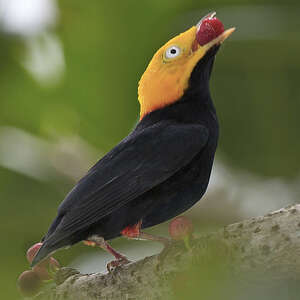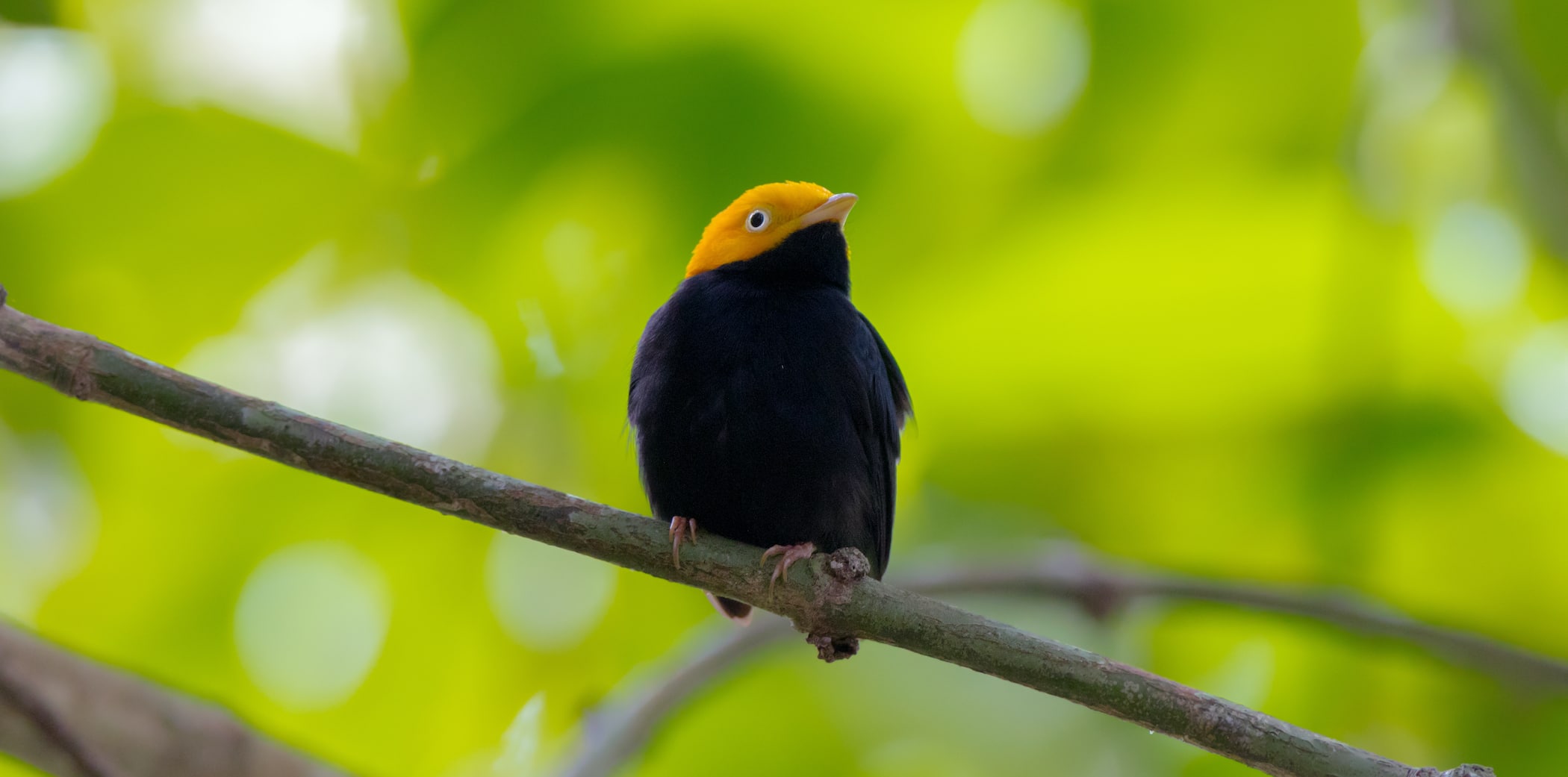In the realm of the animal kingdom, the emergence of hybrid species is often an exceedingly rare occurrence. However, breaking through the norms, scientists have recently discovered the first known hybrid bird species ever found in the Amazon rainforest.
The Golden-Crowned Manakin (Lepidothrix vilasboasi), a small passerine bird characterized by its yellow-feathered crown, has taken center stage as an astonishing example of avian hybridization.
“While hybrid plant species are very common, hybrid species among vertebrates are exceedingly rare,” stated Jason Weir from the University of Toronto in Canada.
Following a series of rigorous genetic tests, researchers unveiled the astonishing truth: the Golden-Crowned Manakin is indeed a hybrid species. This remarkable bird was initially documented in 1957 and remained elusive until its rediscovery in 2002.

A hybrid species arises when two distinct species come together to mate and successfully produce offspring, ultimately giving rise to a hybrid population. In the case of the Golden-Crowned Manakin, it emerged as a cross between its parental species—the Snow-Capped Manakin and the Opal-Crowned Manakin. However, once the hybrid species is formed, it typically loses the ability to freely interbreed with either of the parental species.

Researchers gathered genetic and feather samples during two separate field trips to Brazil. These expeditions allowed them to sequence a significant portion of the Golden-Crowned Manakin’s genome, utilizing 16,000 different genetic markers. Their findings revealed that 20 percent of the bird’s genome originated from the Snow-Capped Manakin, while the remaining 80 percent came from the Opal-Crowned Manakin.

Employing coalescent modeling, researchers determined the approximate time at which the Golden-Crowned Manakin diverged from its parental species. The hybridization event occurred around 180,000 years ago, stemming from the mating of the two parental birds. Both parental species had initially diverged from their common ancestor roughly 300,000 years ago.

The male Golden-Crowned Manakin exhibits a distinctive crown adorned with yellow feathers, though not as vibrant as its parental species. To unravel the mystery behind this coloration, researchers closely examined the keratin structure of crown feathers across all three member species, employing an electron microscope.

“The Golden-Crowned Manakin ended up with an intermediate keratin structure that does a poor job of making either the brilliant white or the reflective iridescence of the parental species,” explained Weir.

Early in its evolution, the Golden-Crowned Manakin likely bore duller white or grey feathers due to its keratin structure. Over time, it evolved yellow feathers as an alternative means of attracting females, resulting in its uniquely colored appearance.
This exceptional species resides in an area of the south-central Amazon rainforest covering approximately 200 square kilometers. It is largely separated from areas inhabited by its parental species by wide rivers that the birds are reluctant to cross.

Its survival as a distinct species owes much to geographical isolation, which occurred during past ice ages when rainforest coverage contracted and natural barriers in the form of wide rivers emerged.
“Without geographic isolation, it’s very likely this would never have happened because you don’t see the hybrids evolving as separate species in other areas where both parental species meet,” Weir noted.
Listed as Vulnerable, the Golden-Crowned Manakin faces the threat of declining population due to increased logging resulting from a rapidly growing human population. This discovery underscores the intricate web of biodiversity within the Amazon rainforest and serves as a testament to the ongoing process of evolution that shapes our natural world.






